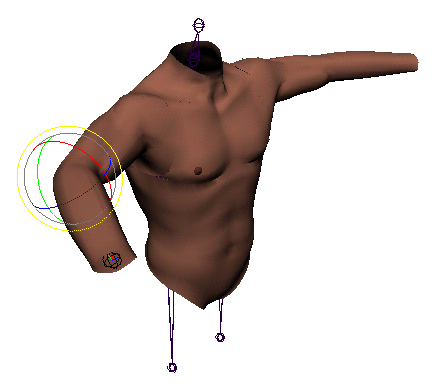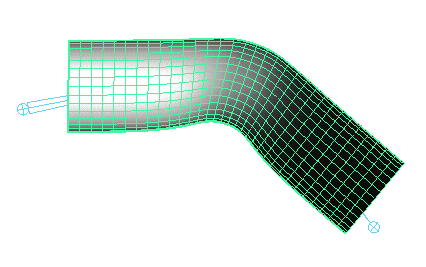Smooth skinning provides smooth, articulated deformation effects by enabling several joints to influence the same deformable object points. The smoothing effects around joints are automatically set up when you bind skin.

With smooth skinning, more than one joint can influence each CV to provide smooth bending effects. You do not need to use flexors or lattice deformers. To explore some examples now, see Example workflows for smooth skinning.

Maya provides smooth deformation effects by allowing several nearby joints to have varying influences on the same skin points (NURBS CVs, polygonal vertices, or lattice points). With default smooth skinning, the amount of influence varies with distance, but you can also define influences using volume manipulators with interactive smooth skin binding. Once you have basic skin point weighting set up, you can refine and edit by painting weights on a joint-by-joint basis.
Unlike rigid skinning, with smooth skinning you don’t have to use lattice deformers, flexors, or edit skin point set memberships to get smooth deformation effects. The smoothing effects around joints are automatically set up when you bind. The default effect of each joint on a smooth skin point depends on the joint’s proximity to the point, or on your adjustments of its volume manipulator if you use interactive binding.